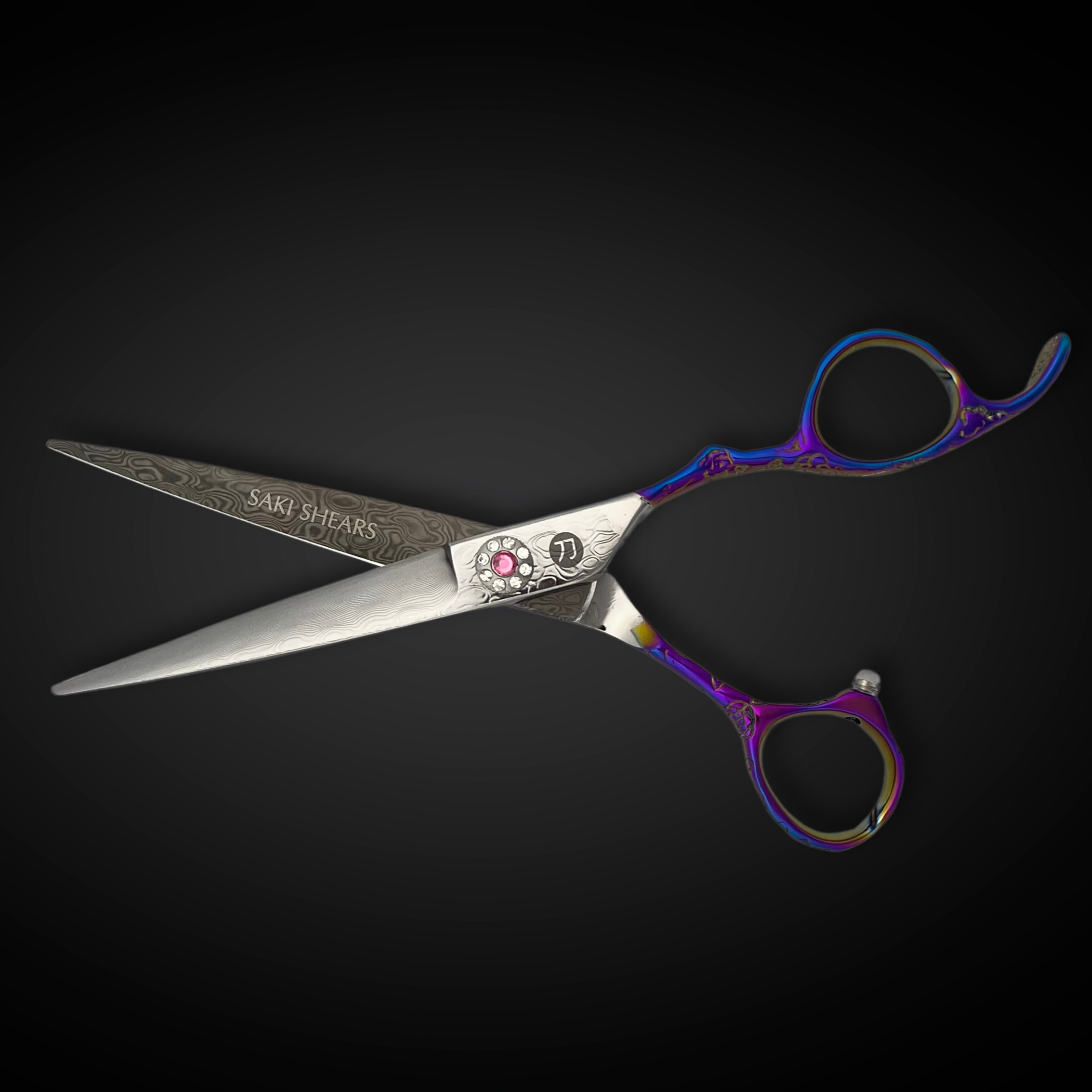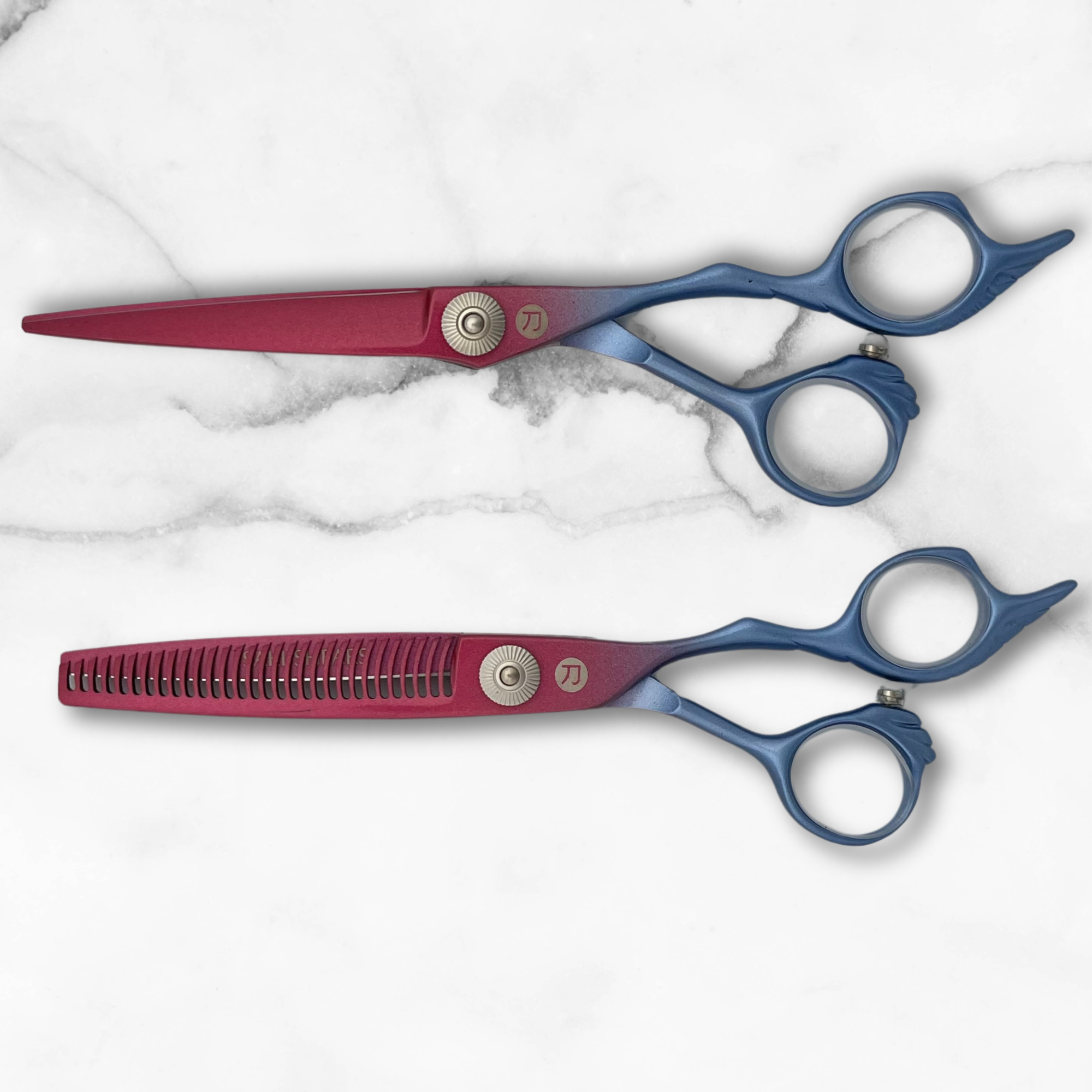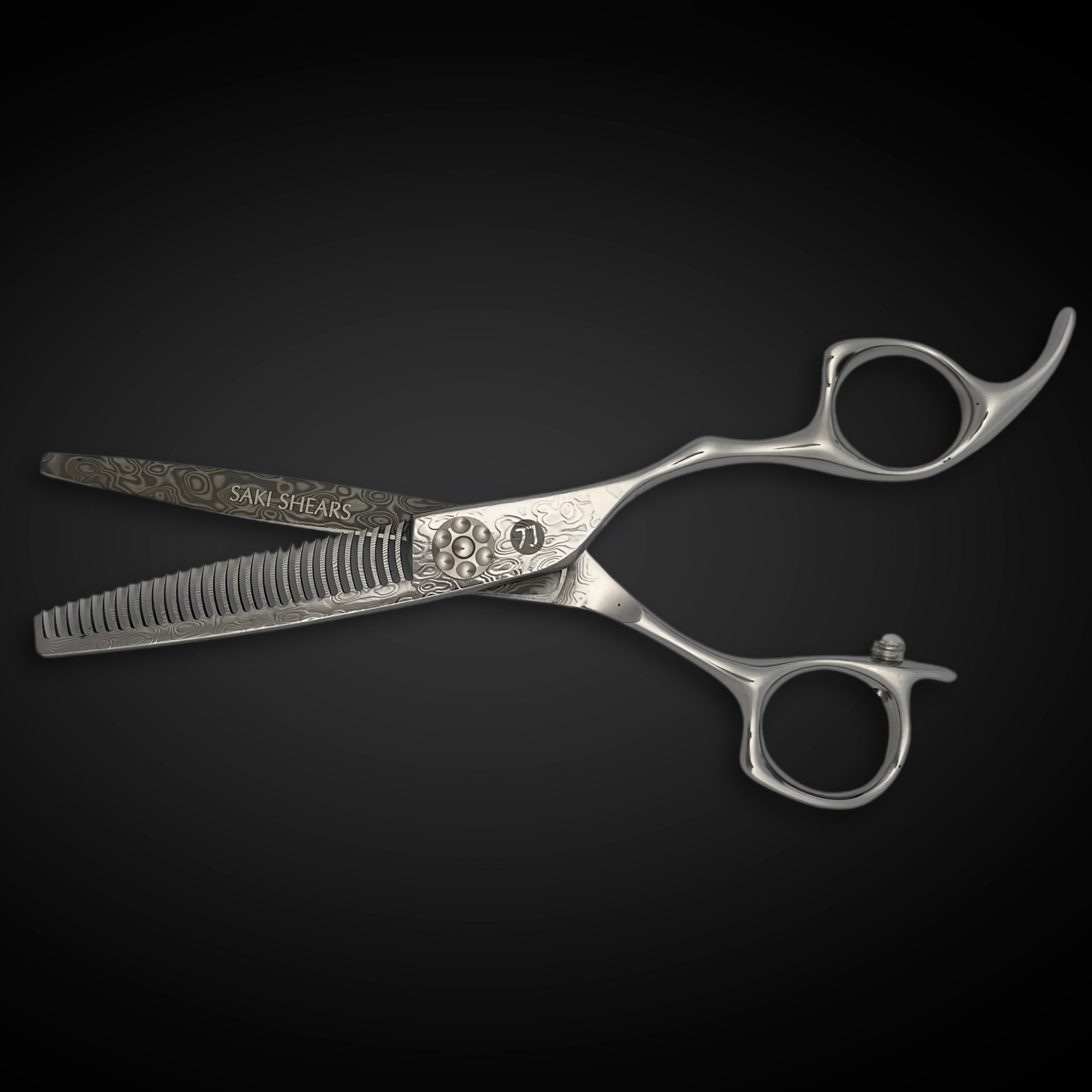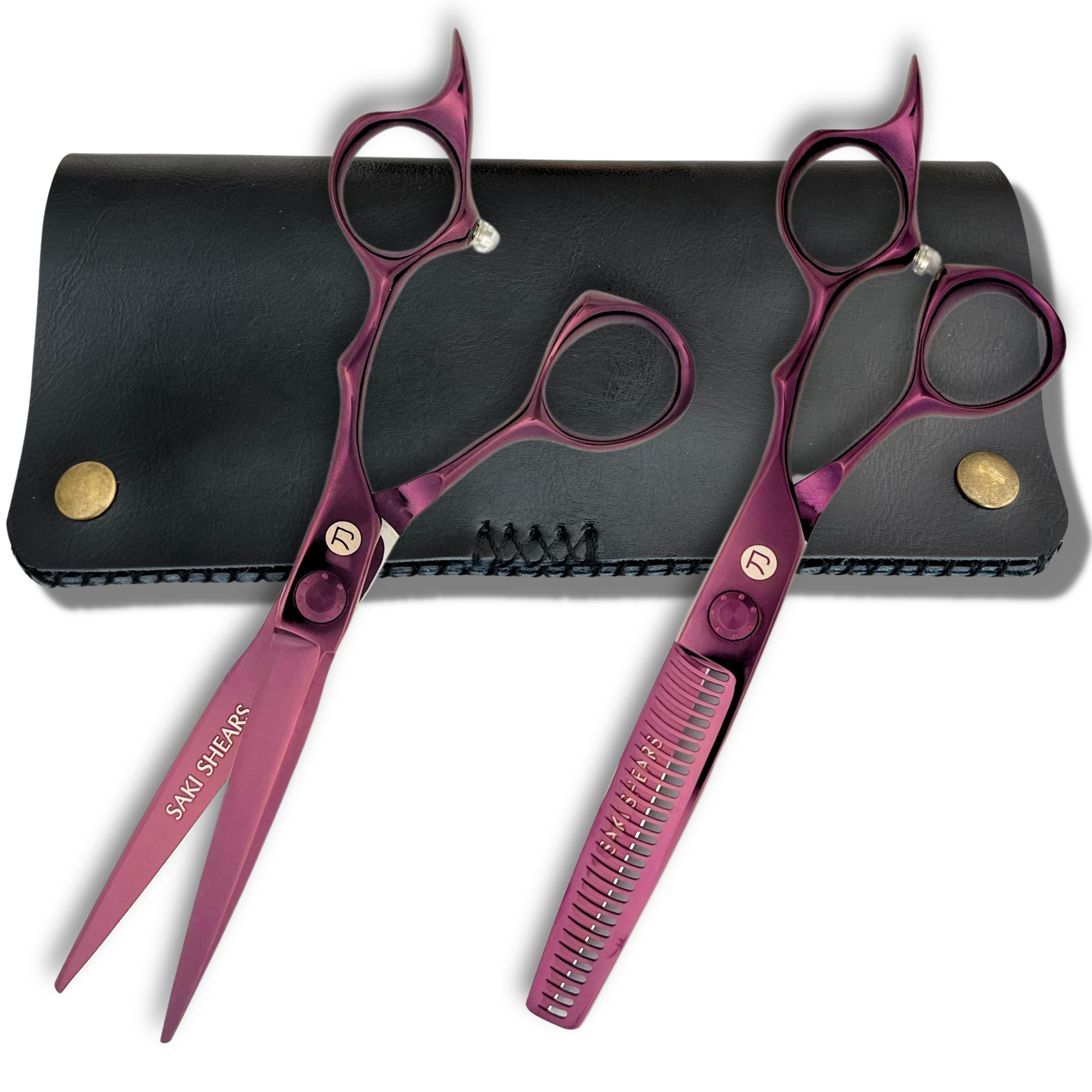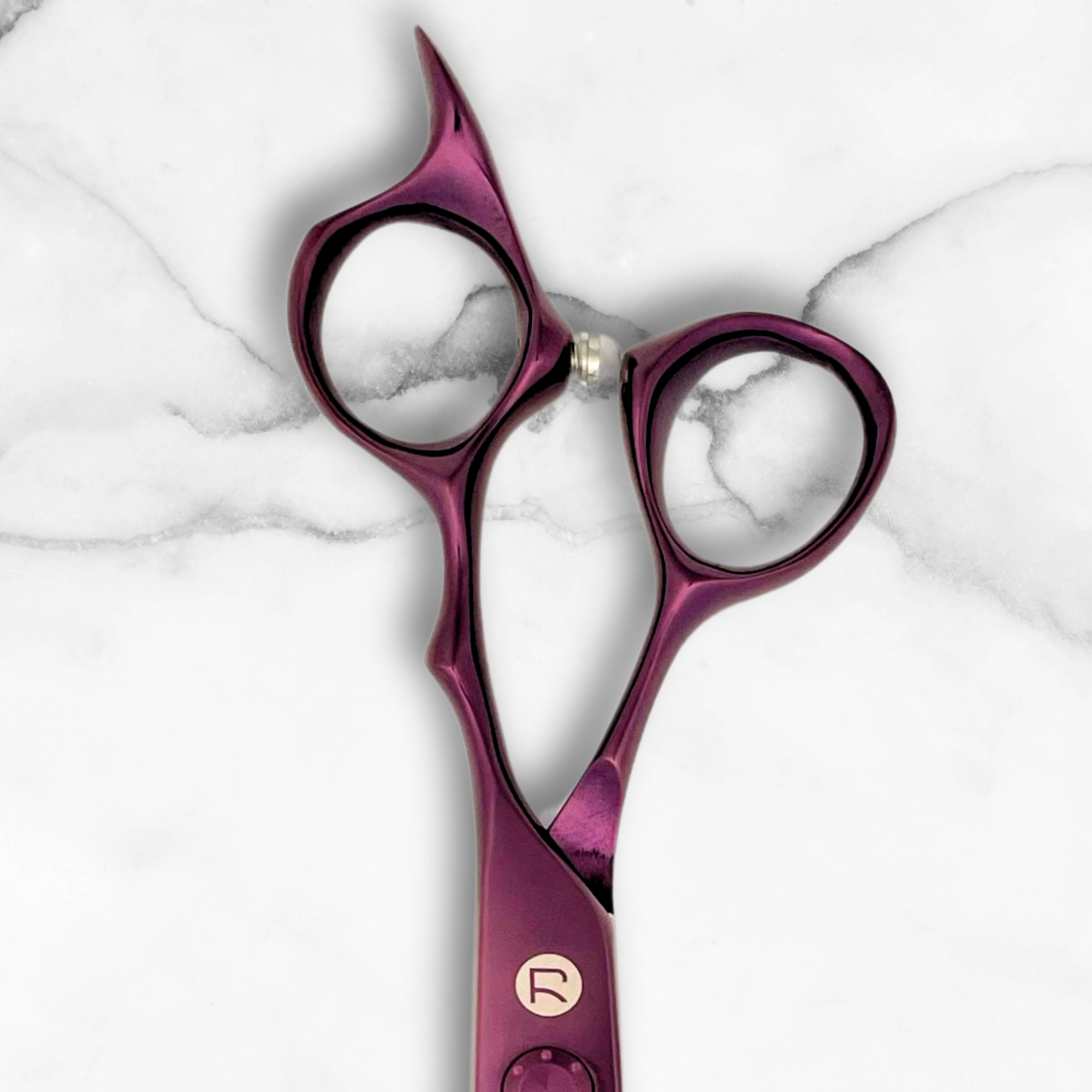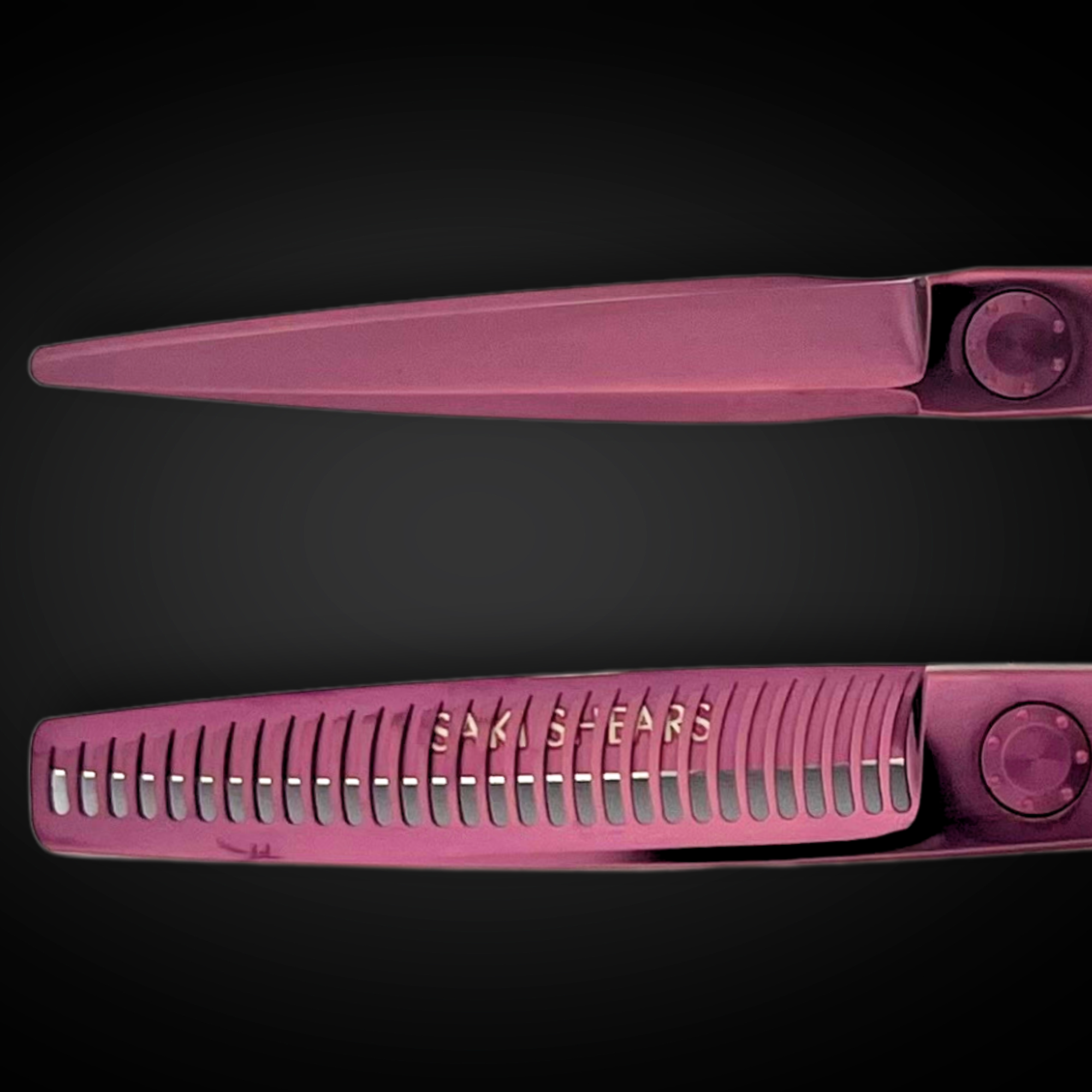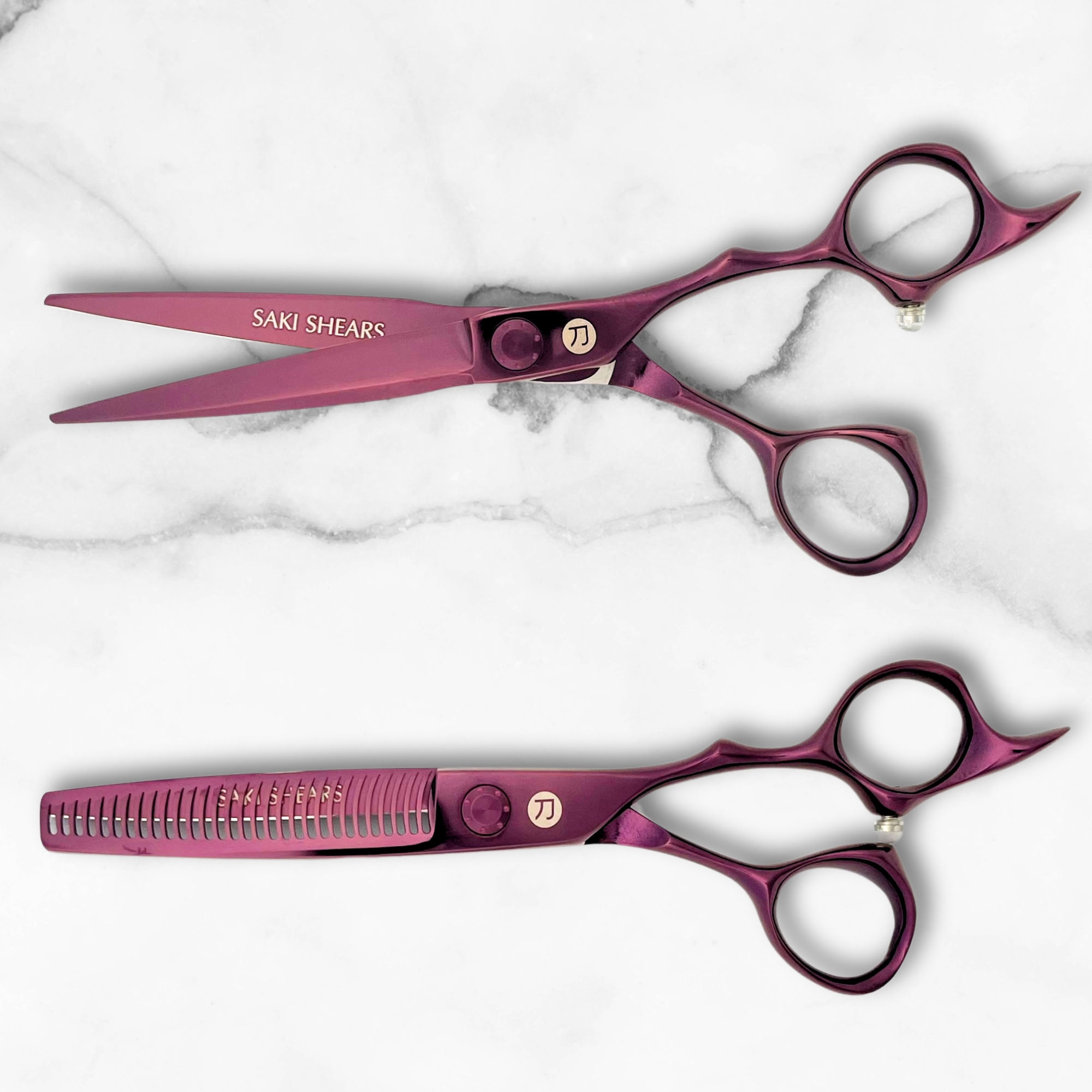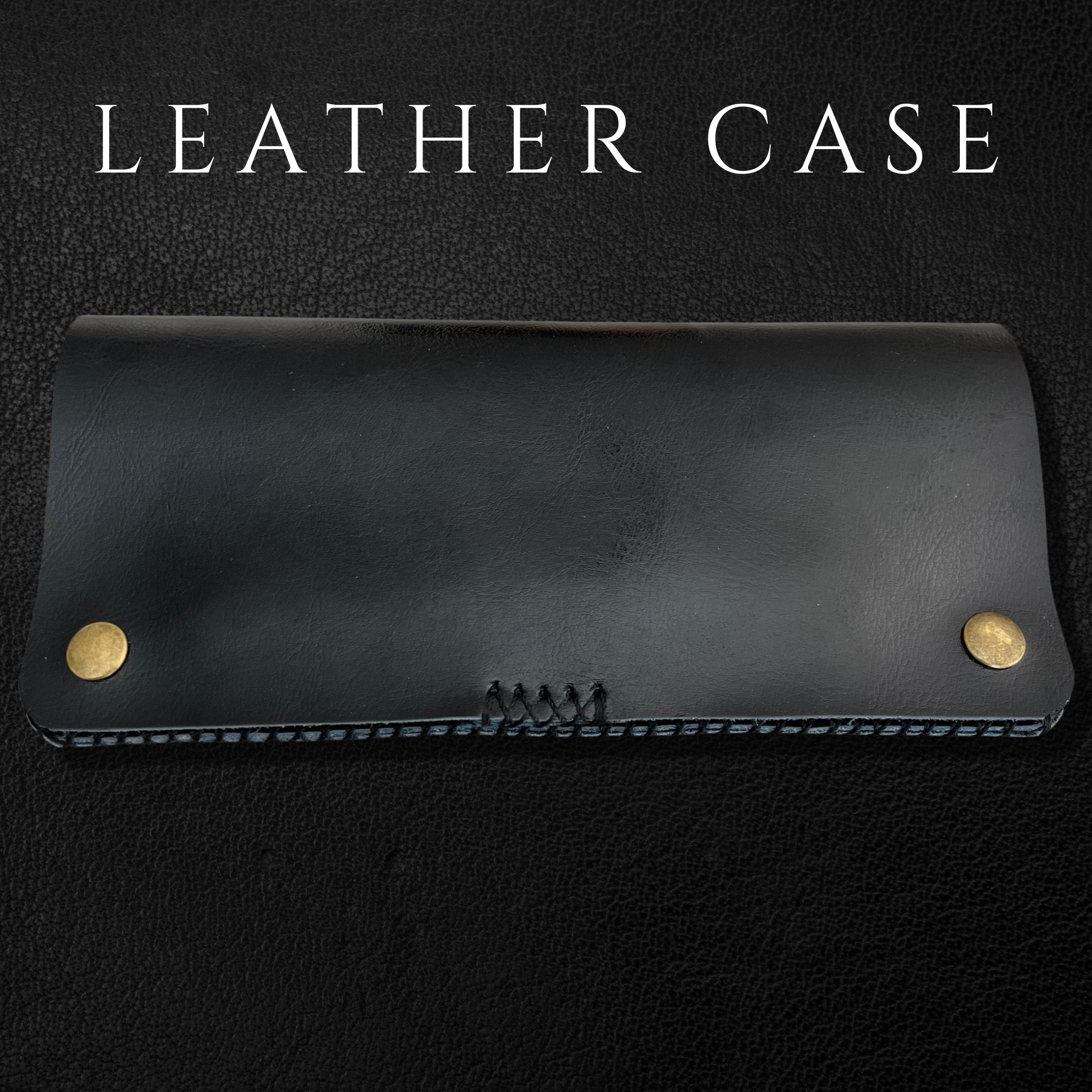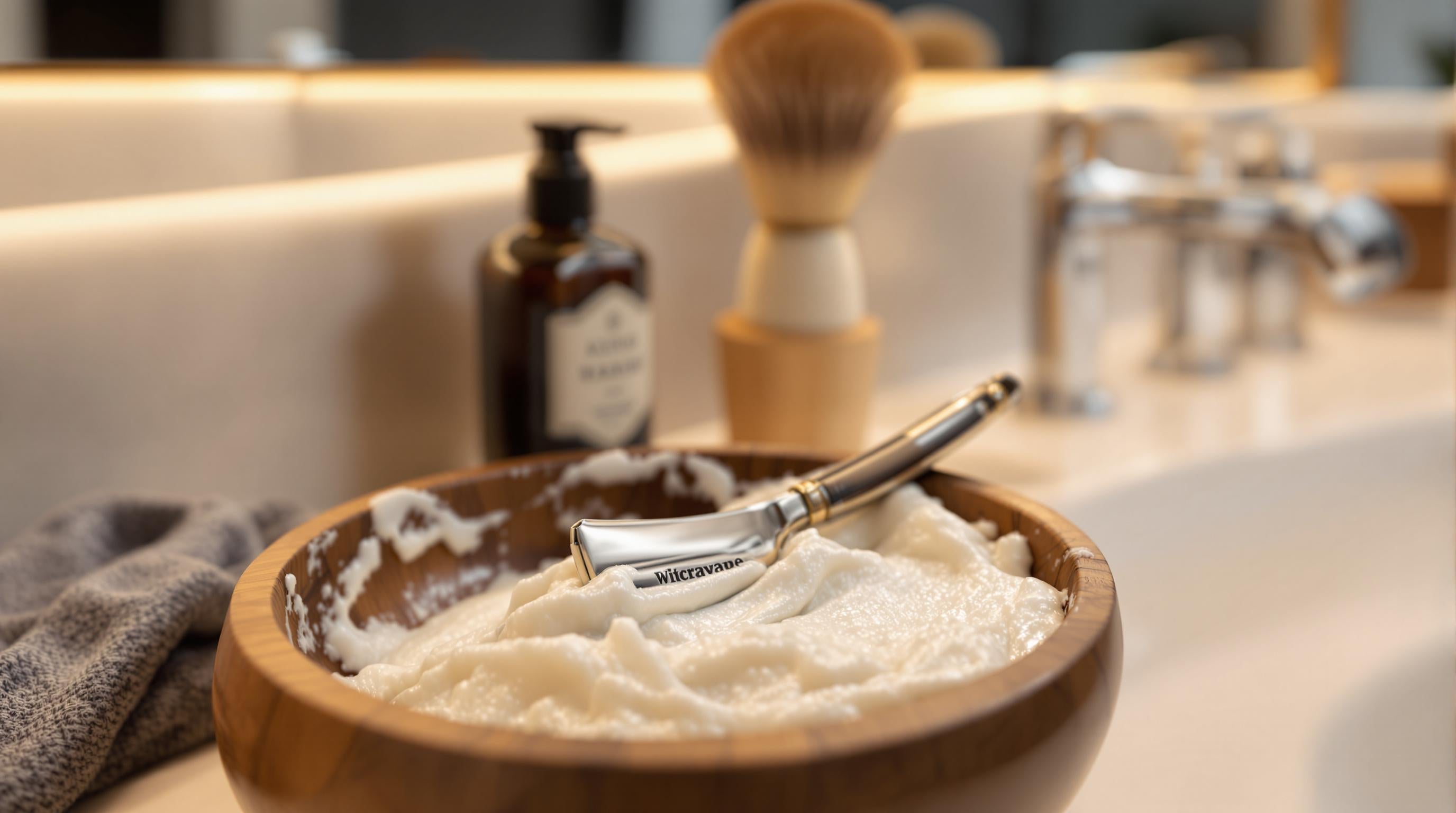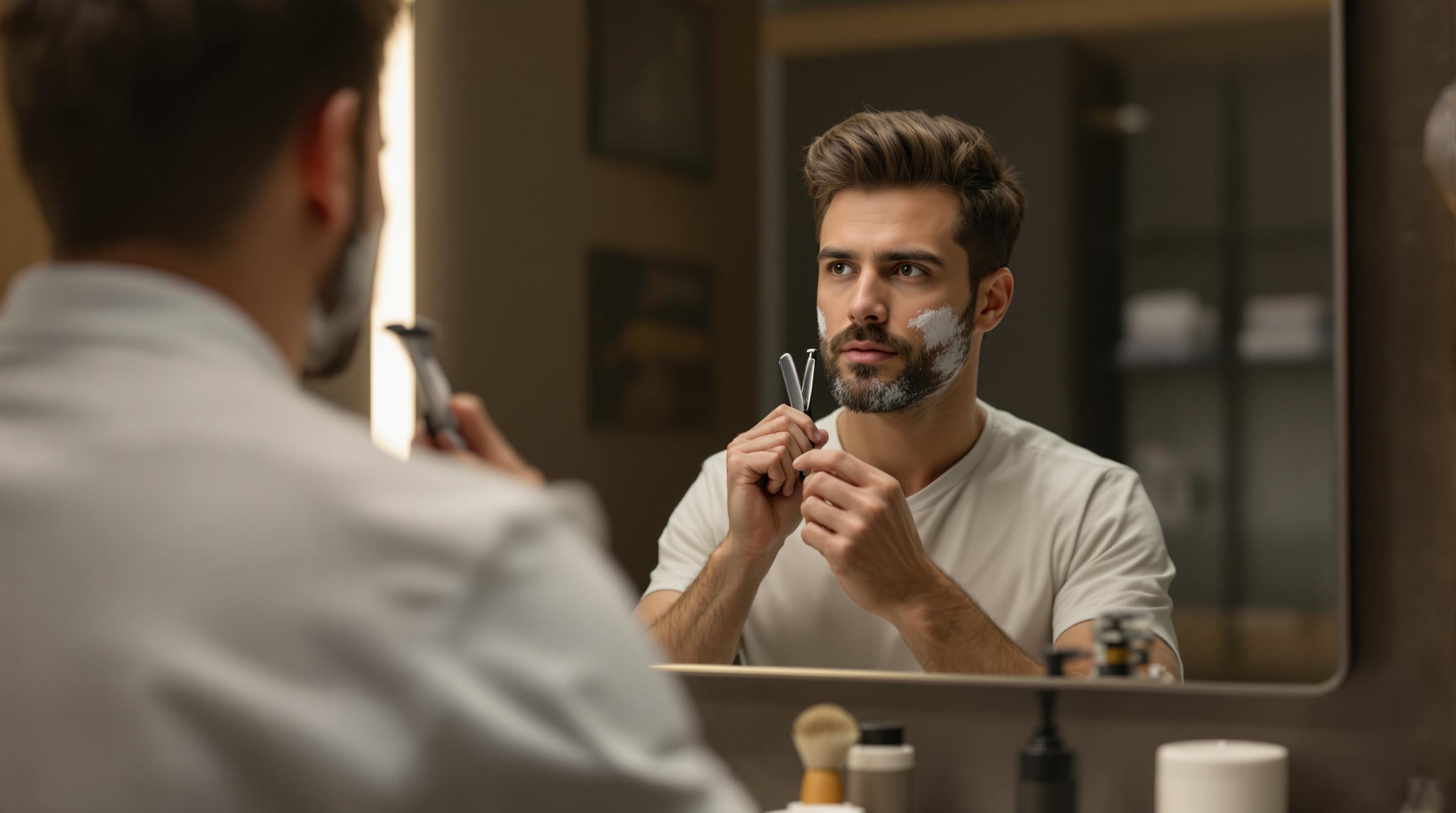How to Shave with a Straight Razor: A Beginner's Guide
Shaving with a straight razor offers a closer, more precise shave, reduces waste from disposable razors, and can save you money in the long run. While it requires practice, the right tools and techniques make it a rewarding grooming ritual. Here's what you'll need to get started:
Key Takeaways:
- Benefits: Cost-effective, eco-friendly, and delivers a smooth shave.
- Tools: Straight razor (5/8" or 6/8" blade, stainless steel), shaving brush (synthetic or badger), quality soap, leather strop, and honing stones.
- Steps: Prep with a hot towel and pre-shave oil, shave at a 30-degree angle with light strokes, and finish with aftershave care.
- Maintenance: Clean, dry, and strop your razor regularly; hone every 1–3 months for sharpness.
Quick Comparison of Tools:
| Tool | Purpose | Beginner-Friendly Option |
|---|---|---|
| Straight Razor | Main shaving tool | 5/8" or 6/8" stainless steel |
| Shaving Brush | Creates lather | Synthetic or badger bristles |
| Strop | Maintains blade alignment | Dual-sided leather strop |
| Honing Stones | Restores blade sharpness | Occasional use |
With practice and care, straight razor shaving transforms a daily routine into a mindful tradition. Learn the full technique and maintenance tips below.
How to Shave with a Straight Razor
Required Tools and Products
Starting with straight razor shaving means investing in quality tools that will last and make the experience both safe and effective. These tools not only ensure a smooth shave but also connect you to the tradition and skill behind this method.
Choosing Your First Straight Razor
Your straight razor kit begins with selecting the right blade. For beginners, a 5/8" or 6/8" blade width is a great starting point, as it offers a good mix of control and efficiency. The blade material also matters - carbon steel provides excellent sharpness, while stainless steel resists rust better.
| Feature | Beginner-Friendly Option |
|---|---|
| Blade Width | 5/8" - 6/8" |
| Grind Type | Half-hollow |
| Point Style | Round point |
| Material | Stainless steel |
Shaving Brush and Soap
A quality brush and soap are must-haves for creating the rich lather that makes shaving comfortable. Here are the main types of brushes to consider:
- Synthetic bristle brushes: Easy to maintain and perfect for beginners.
- Badger hair brushes: Retain water well, making it easier to whip up a luxurious lather.
- Boar hair brushes: Affordable and great for exfoliation, softening with use over time.
Pair your brush with a high-quality shaving soap to ensure a smooth, irritation-free experience.
Tools for Maintenance and Care
Keeping your razor sharp and in top condition requires the right care tools. Here’s what you’ll need:
- Leather Strop: Go for a wide, dual-sided strop with leather and canvas surfaces for regular blade maintenance.
- Honing Stones: Use these occasionally to restore your razor’s sharp edge.
- Cleaning Products: Regular cleaning ensures both your razor and strop stay in peak condition.
"Every craftsman knows you've got to take care of your tools. Keep them clean and keep them in good shape" [4] - Robert Knowles, Freelance Author
With these tools, you're set to dive into the world of straight razor shaving and start perfecting your technique.
Basic Shaving Steps
Straight razor shaving is all about precision and the right technique. Here's a step-by-step guide to help you achieve a smooth, comfortable shave.
Pre-Shave Skin Care
Preparation is everything. Start by placing a hot towel on your face for about 30 seconds. This softens the hair and opens up your pores, making the shave easier and reducing irritation.
Next, apply a good pre-shave oil. This creates a protective layer between your skin and the razor, allowing the blade to glide smoothly. It also reduces the chances of cuts and irritation. Once your skin is ready, it's time to focus on how to handle the razor properly.
Correct Razor Handling
How you hold the razor makes a big difference. Place your thumb under the shank, with your index, middle, and ring fingers resting on top. The handle should balance between your ring and little finger, with the little finger resting on the tang.
Aim for a 30-degree angle between the razor and your skin. This angle strikes the right balance between cutting efficiency and safety. Keep these tips in mind:
- Let the razor's weight do the work; avoid pressing too hard.
- Use short, controlled strokes for better precision and fewer nicks.
- Keep your wrist steady to maintain a consistent angle throughout.
This technique is especially important when shaving tricky areas like the neck and jawline.
"An angle that's too steep can cause cuts, while too shallow an angle may scrape the skin and cause irritation" - Joe Caccavella Jr., barber and proprietor of Joe's Barbershop in Chicago [1]
Shaving Difficult Areas
Some areas, like the neck and chin, can be tricky due to their curves and hair growth patterns. Here's how to handle them:
| Area | Technique | Key Consideration |
|---|---|---|
| Neck | Use short, light strokes | Map the direction of growth |
| Chin | Flatten skin with expressions | Keep the angle consistent |
| Jawline | Use shorter strokes | Stretch the skin taut |
For the neck, tilt your head back to create a flat surface. Use your free hand to pull the skin tight, making it easier for the razor to glide smoothly.
These techniques not only help you navigate challenging areas but also ensure a cleaner shave with less irritation. Once you're done, you're ready to move on to post-shave care.
After-Shave Care and Maintenance
Post-Shave Skin Treatment
Start by rinsing your face with lukewarm water to clear away any residue. Follow this with a splash of cold water to help close your pores and keep moisture in. Gently pat your face dry with a clean, soft towel - don’t rub, as it can irritate freshly shaved skin. While your skin is still slightly damp, apply an aftershave balm or moisturizer. Look for natural ingredients like aloe vera or witch hazel to help calm irritation and support healing [1].
"Shaving can irritate the skin, making post-shave care essential for healing and protection."
Once your skin is taken care of, it’s time to turn your attention to your razor.
Razor Care Basics
Taking proper care of your straight razor ensures it stays effective and lasts for years. Here’s a quick guide to post-shave razor maintenance:
| Step | Action | Purpose |
|---|---|---|
| Clean | Rinse with warm water and soap | Clears away debris and bacteria |
| Sanitize & Dry | Wipe with rubbing alcohol and a lint-free cloth | Disinfects and prevents rust |
| Store | Keep in a ventilated area | Preserves blade condition |
If you live in a humid area, consider applying a thin layer of mineral or camellia oil to the blade to prevent rust. Beyond daily care, occasional sharpening is also necessary to keep your razor in top shape.
Blade Sharpening Guide
Keeping your blade sharp is essential for a smooth, efficient shave. Before each use, strop your razor 30–40 times. Start on the rough side of the strop, then finish on the smooth leather side [6]. This helps realign the blade’s edge and removes any tiny particles.
For more thorough maintenance, plan to hone your blade every 1–3 months, depending on how often you shave. Professional honing services typically cost between $20–40 USD.
"Following these steps will ensure that your blade lasts as long as possible." - Nathan Gareau, Author
Blades made of high-carbon steel require extra care to avoid rust. After drying, apply a couple of drops of blade oil to protect the metal. With proper attention, your razor could serve you well for decades.
Common Mistakes to Avoid
Preventing Cuts and Nicks
To avoid cuts, use light, controlled strokes and keep your skin tight by pulling it with your free hand. A firm grip and steady pressure help you stay in control. For the best handling, place your thumb under the blade and wrap your ring and pinkie fingers around the tang for stability [4].
| Common Mistake | Correct Approach | Why It Helps |
|---|---|---|
| Shaving too quickly | Use slow, deliberate strokes | Lowers the chance of cuts |
| Poor hand positioning | Thumb under blade, fingers on tang | Enhances control |
| Not tightening skin | Pull skin taut with free hand | Prevents nicks and snags |
Minimizing Skin Irritation
Skin irritation often comes from using the wrong technique or a dull blade. Always shave with a sharp blade and follow the grain of your hair. Regular stropping before each shave keeps the blade smooth, reducing friction and the risk of razor burn [1].
"A sharp blade is safer and more effective. Dull blades can cause cuts and nicks due to increased pressure." [2]
Be extra cautious around areas where hair grows in different directions, like the neck and jawline, as these spots are more prone to irritation.
Addressing Patchy Shaving
Patchy results usually occur in areas with tricky grain patterns, such as the neck and chin [5]. Start by mapping your facial hair growth to understand the directions. Use short, precise strokes and reapply shaving cream as needed to maintain a smooth shave. Keep your blade at a consistent angle throughout.
For hard-to-reach areas:
- Reapply lather before making additional passes.
- Divide problem areas into smaller sections.
- Use light strokes, always following the direction of hair growth [3].
Conclusion
Key Takeaways
Shaving with a straight razor is a skill that takes time and effort to master but offers a rewarding experience. With proper care and technique, a well-maintained straight razor can deliver excellent shaves for years. The keys to success include keeping the blade in good condition, maintaining the right 30-degree angle, and using light, controlled strokes [1][3].
Here are the essential tools you’ll need:
| Tool | Purpose |
|---|---|
| Straight Razor | Main shaving tool |
| Strop | Keeps blade aligned |
| Pre-shave Oil | Protects the skin |
| Quality Soap | Provides lubrication |
Armed with these essentials, you're ready to start your straight razor journey.
Tips for Beginners
To ease into straight razor shaving, begin with short practice sessions or consider using a shavette to build confidence. Store your razor in a dry, ventilated space, and if you live in a humid area, apply a drop of mineral oil after each use to prevent rust. For optimal performance, consider professional honing once or twice a year, which typically costs $20–40.

